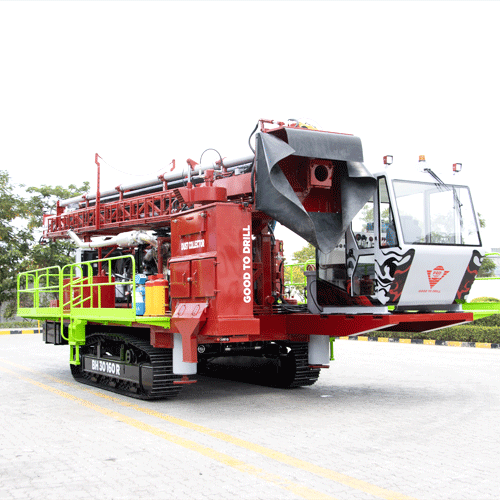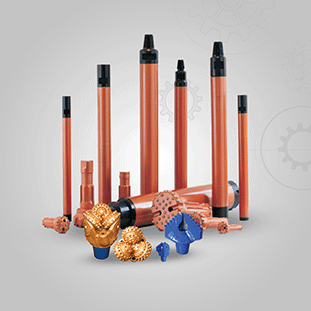Best Practices for Safety in the Mining Industry
Mining is an essential industry that supports global development by providing the raw materials necessary for countless industries, including construction, energy, and technology. However, mining operations come with inherent risks. From the dangers of operating heavy machinery to underground hazards like gas leaks and rockfalls, safety must be a priority. Implementing best practices not only reduces accidents but also ensures the well-being of workers, minimizes downtime, and improves overall efficiency. Below, we delve deeper into the essential safety measures that every mining operation should adopt.
The Need for Enhanced Safety Measures
Globally, the mining industry experiences over 12,000 fatalities annually, with millions of non-fatal injuries reported. (Source: International Labour Organization). These alarming statistics highlight the urgency for effective safety strategies in mining operations.

1. Choosing Quality Equipment
The foundation of any safe mining operation begins with the selection of quality equipment. Reliable machinery not only enhances productivity but also significantly reduces the risk of accidents. Poor-quality equipment is prone to breakdowns, increasing the likelihood of hazardous situations during repairs or malfunctions.
Stat: Equipment failure is responsible for 30-40% of all mining accidents globally. (Source: Mining Safety Review)
Modern mining technologies have transformed the industry by introducing innovations designed with safety in mind. For instance, automated rod handlers in reverse circulation (RC) rigs and rod carousels in blast hole rigs reduce manual handling. These technologies minimize human intervention in potentially dangerous tasks, enhancing precision while lowering the risk of injuries caused by physical strain or mechanical mishaps.
Investing in high-quality equipment is a long-term strategy. While the initial costs may be higher, the benefits of increased operational safety, reduced maintenance, and higher productivity far outweigh the expenses.
2. Personal Protective Equipment (PPE)
Personal Protective Equipment (PPE) is a frontline defense against the hazards of mining operations. The challenging environments of mines—whether underground, open-pit, or underwater—require miners to be equipped with appropriate gear to shield them from potential dangers.
Stat: Proper PPE usage reduces injuries by 60% in mining environments. (Source: National Institute for Occupational Safety and Health)
.jpg)

Essential PPE includes:
-
Helmets: To protect against falling debris.
-
Gloves: For handling sharp or hot objects.
-
Safety goggles: To shield eyes from dust and flying particles.
-
High-visibility clothing: Ensures workers are easily spotted, even in dimly lit areas.
-
Respiratory protection: Prevents inhalation of harmful dust or toxic gases.
However, merely providing PPE is not enough. Equipment must be regularly inspected to ensure it meets industry standards. Additionally, employees should be trained in the proper usage and maintenance of their gear. A culture that emphasizes the importance of PPE as a non-negotiable aspect of daily operations can significantly reduce risks.
3. Regular Audits and Inspections
Safety in mining cannot be left to chance. Routine audits and inspections are vital for identifying and addressing potential hazards before they escalate.
.jpg)

These assessments are comprehensive, covering:
- Equipment condition: Ensuring all machinery is functioning optimally.
- Operational practices: Verifying that tasks are performed according to safety standards.
- Compliance: Confirming adherence to local and international mining regulations.
Audits and inspections not only ensure that safety protocols are followed but also help identify areas for improvement. A proactive approach to risk management fosters a safer work environment and minimizes the likelihood of costly and dangerous incidents.
4. Preventive Maintenance
One of the most effective ways to maintain safety is through preventive maintenance. Regular servicing of machinery reduces the risk of unexpected failures, which can lead to accidents.
Preventive maintenance involves:
- Inspecting equipment for signs of wear and tear.
- Replacing worn-out parts before they fail.
- Lubricating moving components to ensure smooth operation.
- Conducting system diagnostics to identify hidden issues.

For instance, drills and rigs used in mining must be meticulously maintained to ensure they function safely. Preventive maintenance not only enhances worker safety but also improves equipment longevity and reduces operational downtime.
5. Adhering to Safety Protocols
Safety protocols form the backbone of any secure mining operation. These guidelines outline the dos and don’ts for various activities, ensuring tasks are performed safely and efficiently.
Critical aspects of safety protocols include:
- Procedures for equipment operation.
- Emergency response plans for incidents like fires, gas leaks, or cave-ins.
- Guidelines for safely storing and handling explosives.
- Proper methods for entering and exiting confined spaces.
Encouraging a safety-first culture ensures that all employees, from management to workers, understand the importance of adhering to these protocols. When safety becomes a shared responsibility, the likelihood of accidents is drastically reduced.
6. Safety Training Programs
Knowledge is power, and in the mining industry, it is a powerful tool for preventing accidents. Comprehensive safety training programs are essential for equipping workers with the skills and knowledge needed to navigate potential hazards.
Training programs should cover:
- Proper use of machinery and equipment.
- Recognizing and mitigating risks in the work environment.
- Emergency response procedures, including evacuation and first aid.
- The importance of adhering to safety protocols and using PPE.
Regular refresher courses ensure that safety remains a priority for both new and experienced workers. Engaging training sessions, possibly incorporating real-world scenarios and hands-on practice, can effectively reinforce safety principles.
7. Technology for Enhanced Safety
The mining industry has embraced technological advancements to improve safety. Automation and real-time monitoring systems have revolutionized the way mining operations are conducted, minimizing risks and enhancing precision.
Stat: Mining sites using real-time monitoring saw a 40% reduction in gas leak incidents. (Source: Occupational Safety Journal)

Examples of safety-enhancing technologies include:
Auto rod handlers and rod carousels: Reduce manual handling, decreasing the risk of injuries and enhancing operational efficiency.
Real-time monitoring systems: Track environmental conditions, such as gas levels and ground stability, providing early warnings of potential hazards.
AI-driven analytics: Predict equipment failures and optimize maintenance schedules.
Drones: Assist in site inspections, reducing the need for workers to enter dangerous areas.
8. Sustainability in Safety
Sustainability in mining extends beyond environmental stewardship; it also plays a critical role in safety. Sustainable practices create a healthier and safer work environment by reducing harmful emissions, managing waste effectively, and conserving resources.
Stat: Sustainable practices reduced workplace hazards in eco-conscious mining firms by 20%. (Source: Environmental Mining Reports)
Examples of sustainable practices include:
- Using energy-efficient equipment to lower emissions.
- Implementing water recycling systems to reduce waste.
- Restoring mined areas to their natural state to minimize ecological impact.
A commitment to sustainability reflects a mining company’s dedication to responsible operations, ensuring the long-term well-being of its workers and the environment.
Conclusion
Safety in the mining industry is not just a regulatory requirement—it’s a moral imperative. By implementing best practices like investing in quality equipment, enforcing safety protocols, and embracing technological advancements, mining companies can create a safer and more efficient work environment. Additionally, a focus on sustainability ensures that mining operations benefit not only the present workforce but also future generations.
Prioritizing safety is a commitment to protecting the most valuable asset of the mining industry. With the right strategies in place, the industry can continue to fuel global development while ensuring the health and safety of its workers.


.jpg)

.jpg)






